Iceland’s ice caves are nature’s crystal cathedrals – stunning blue chambers carved by glacial movement. If you’re dreaming of stepping inside these frozen wonders, an Iceland ice cave tour is one of the best ways to experience them.
These incredible formations occur when geothermal heat and flowing water carve tunnels through glacial ice, creating ethereal spaces that feel like stepping into another world.
The walls shimmer with different shades of blue ice, from pale crystal to deep sapphire, depending on the density and age of the glacier.
Read on to learn more about Iceland’s icy underworld and the safest ways to enjoy it.
- Experience one of the country’s most magical winter adventures on a small group tour of Iceland
Where are the ice caves in Iceland?
You’ll find the country’s most accessible natural ice caves on the Vatnajökull glacier, the largest glacier by volume in Europe. This massive ice cap in southeast Iceland has multiple outlet glaciers that flow toward the coast, forming caves along the way.
This means the south coast is your best bet for ice caving. Most ice cave tours depart from Jökulsárlón glacier lagoon or Vík, taking you to caves within Vatnajökull National Park. The exact locations change each winter as new caves form and others collapse.
You can also visit ice caves near Mýrdalsjökull glacier, though these are less visited because the hike to reach them usually takes longer. The caves here tend to be smaller but equally beautiful.
Don't worry about finding the caves yourself – your guide knows exactly where to go based on current conditions and safety assessments. They scout new formations regularly and will take you to the most stunning ice chambers of the season.
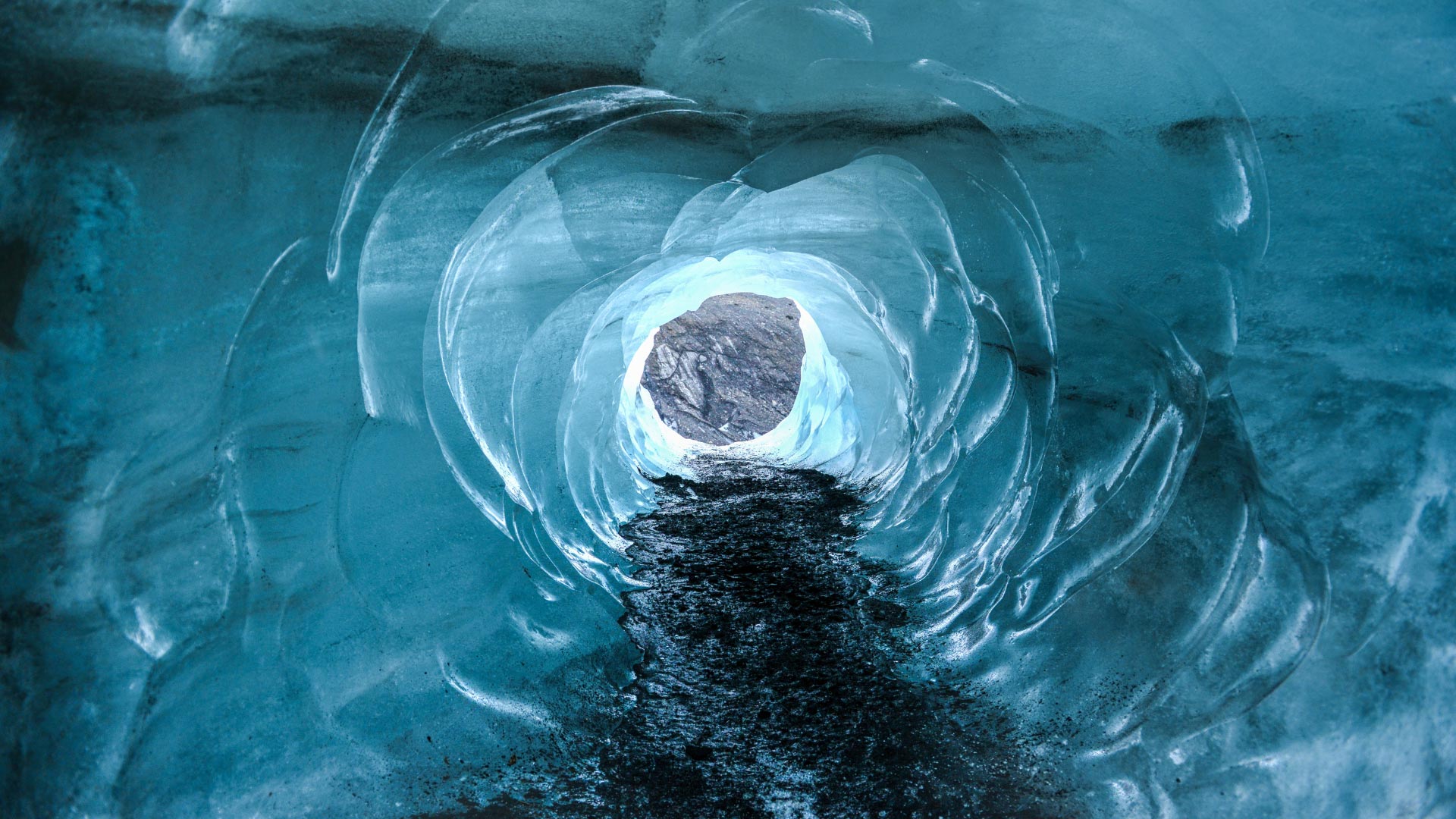
What's the difference between ice caves and ice tunnels?
Ice caves form naturally through glacial processes, while ice tunnels are human-made. Each offers a different experience, so it’s worth experiencing both on your Iceland adventure.
Natural caves change constantly. They’re carved by meltwater flowing beneath glaciers, creating chambers that evolve throughout the year. These caves offer the most dramatic blue ice formations and the authentic feeling of being inside a living glacier.
Artificial ice tunnels, like the famous Into the Glacier tunnel in Langjökull, provide you with year-round access to glacial ice. Created using specialised equipment, they’re safe, stable passages that you can visit regardless of weather conditions.
Both are worth experiencing if you have time.
- Add an ice caving tour to your self-drive or multi-day Iceland getaway
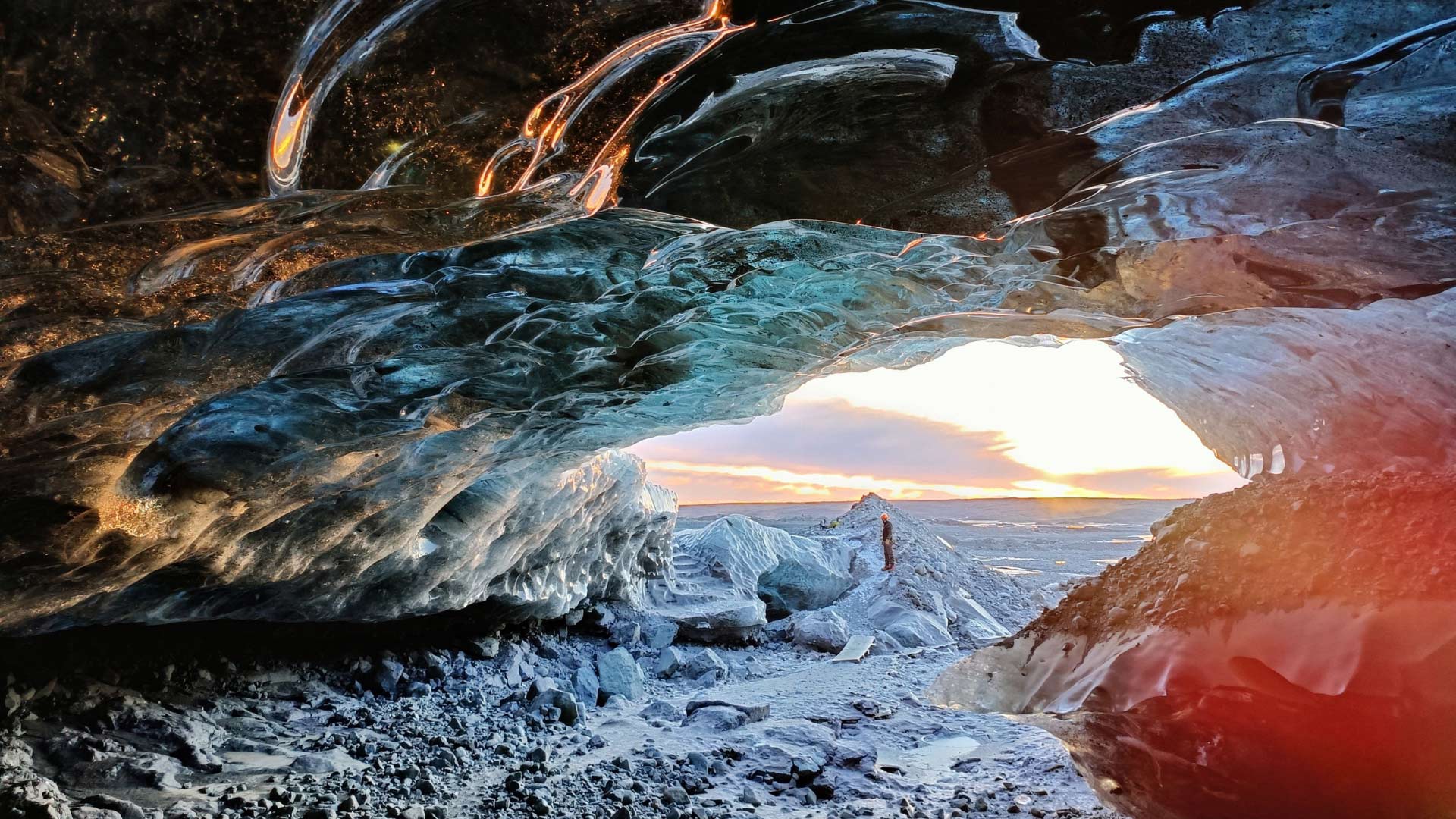
What is the best ice cave to visit in Iceland?
The best ice cave tours in Iceland often visit caves on Vatnajökull glacier, but there's no single “best” cave since formations change each season. Your guide will take you to the most spectacular and safe caves available during your visit.
Katla ice cave tours give you a different adventure, taking you to caves formed by volcanic activity beneath Mýrdalsjökull glacier. In these caves, you’ll see striking black volcanic ash mixed with the ice – a dramatic combination you won’t find anywhere else.
The blue ice caves of Vatnajökull offer you incredible photography opportunities, with walls ranging from crystal clear to deep azure blue. You'll find the largest chambers perfect for dramatic wide shots and detailed close-ups.
When you visit, you'll notice the blue intensity changes as light filters through the ice differently throughout the day. Time your visit during optimal lighting for the most spectacular shots that capture why these caves are so beloved by photographers.
What to expect on an Iceland ice cave tour with Nordic Visitor
Your ice cave adventure begins at the designated meeting point, usually near Jökulsárlón glacier lagoon or another accessible location along the south coast. Your day tour will start with a safety briefing where your guide explains the day’s itinerary and conditions on the glacier.
Your journey to the cave often involves a thrilling ride in super jeeps – specially modified 4x4 vehicles that can handle icy terrain. Your guide will share fascinating information about glacial formation and local geology during the drive.
You’ll gear up with essential safety equipment, including crampons for walking on ice, an ice axe for stability, and a helmet. The professional guide provides all this gear, though you’ll need your own warm clothing, hiking boots, rain gear and snacks, like energy bars.
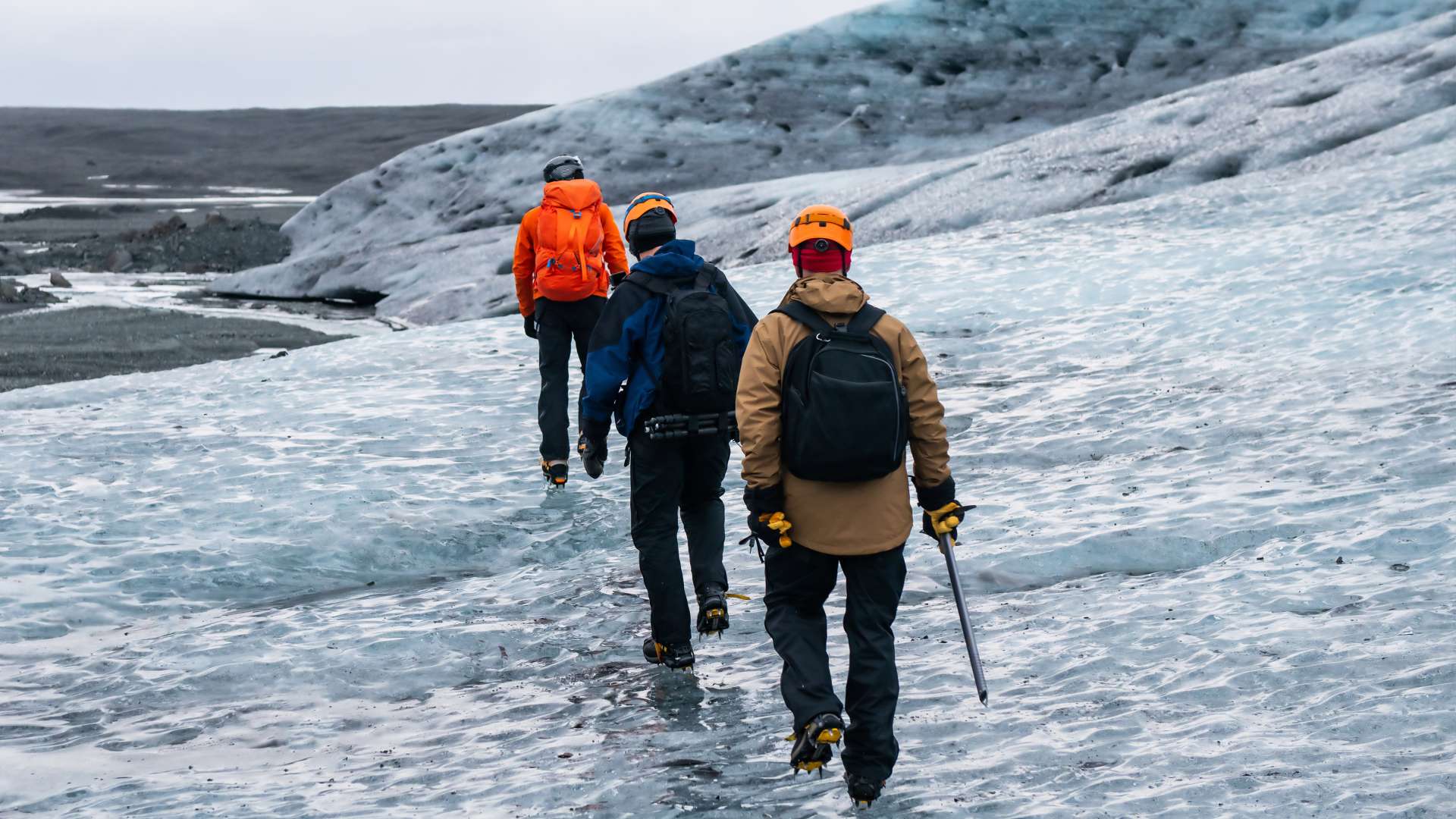
Glacier hiking to reach the cave entrance varies depending on location – sometimes it’s a short walk, other times you’ll trek across the glacier for 20-30 minutes. Your guide sets the pace and ensures everyone stays together.
Once inside the cave, you’ll have time to explore, take photos, and marvel at the blue ice formations. Your guide will explain how the cave formed and point out interesting features in the ice walls. For example, you may spot thin layers of ash inside the walls – remnants from previous volcanic eruptions.
Good to know: Ice cave tours are weather-dependent. Storms, flooding, or other safety concerns can mean that tours are cancelled at short notice. Book with us, and we’ll work with our trusted local partners to reschedule your tour or provide an alternative experience.
- Related: Thrilling things to do in Iceland
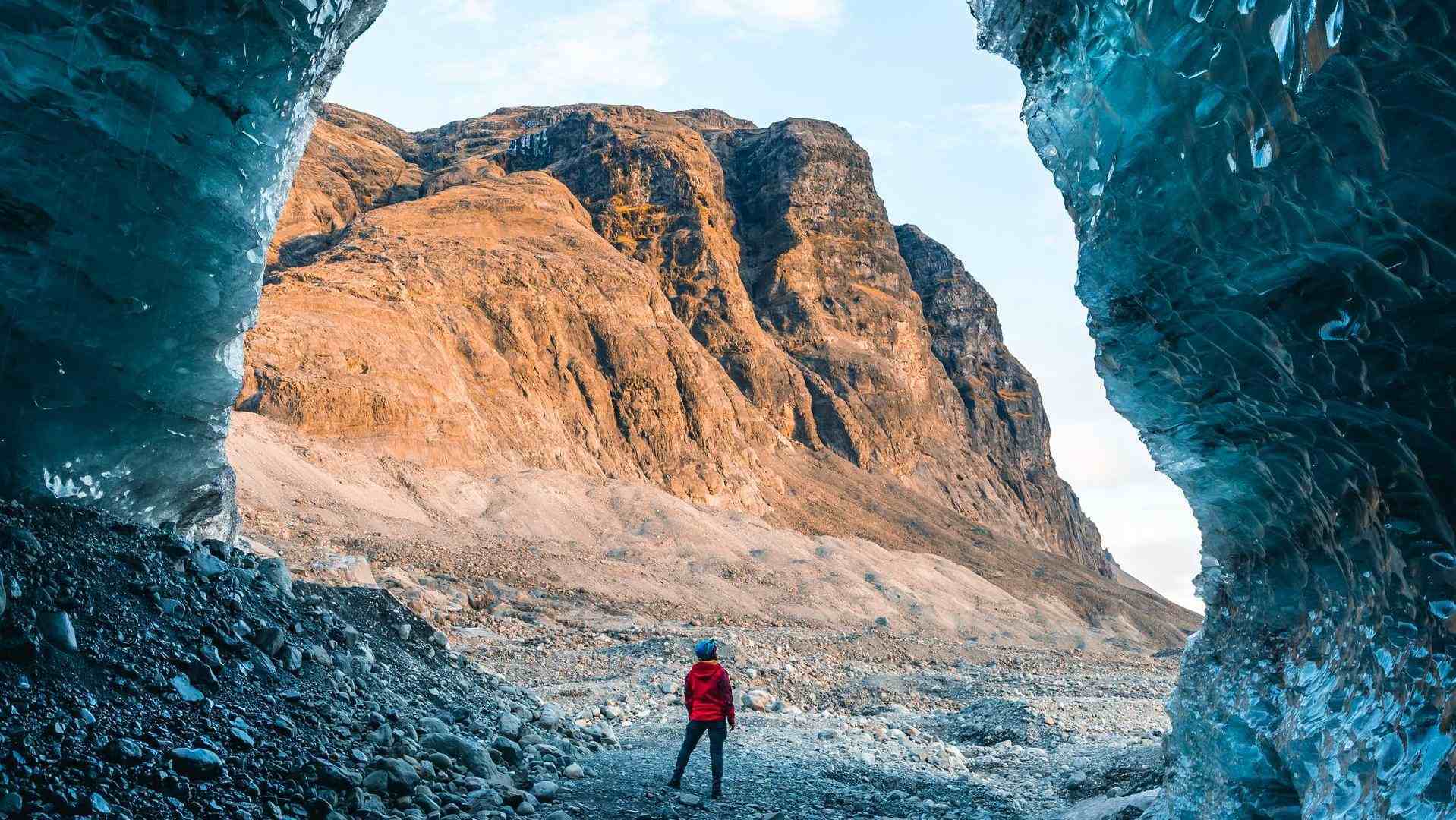
When is the best time of year to go ice caving?
You can access ice caves from September through March, when cold temperatures keep the formations stable. This timing means you can add other winter activities to your trip, like northern lights tours.
In September and October, you can enjoy wintry activities like ice caving and northern lights hunting while still having plenty of daylight for sightseeing. Plus, the weather at this time of year is usually more settled than in mid-winter.
When you visit between November and February, you’ll have the most reliable cave access, though you’ll be working with fewer daylight hours. The ice tends to be at its bluest during these months, so you’ll capture the most dramatic photos.
This happens because the compressed winter ice contains fewer air bubbles and creates longer light paths, allowing it to absorb red wavelengths while transmitting that stunning blue spectrum you'll see.
Winter is also the best time to spot the northern lights in Iceland, with long, dark nights.
- Go ice caving or snowmobiling on a winter tour of Iceland
- Related: Best time to visit Iceland
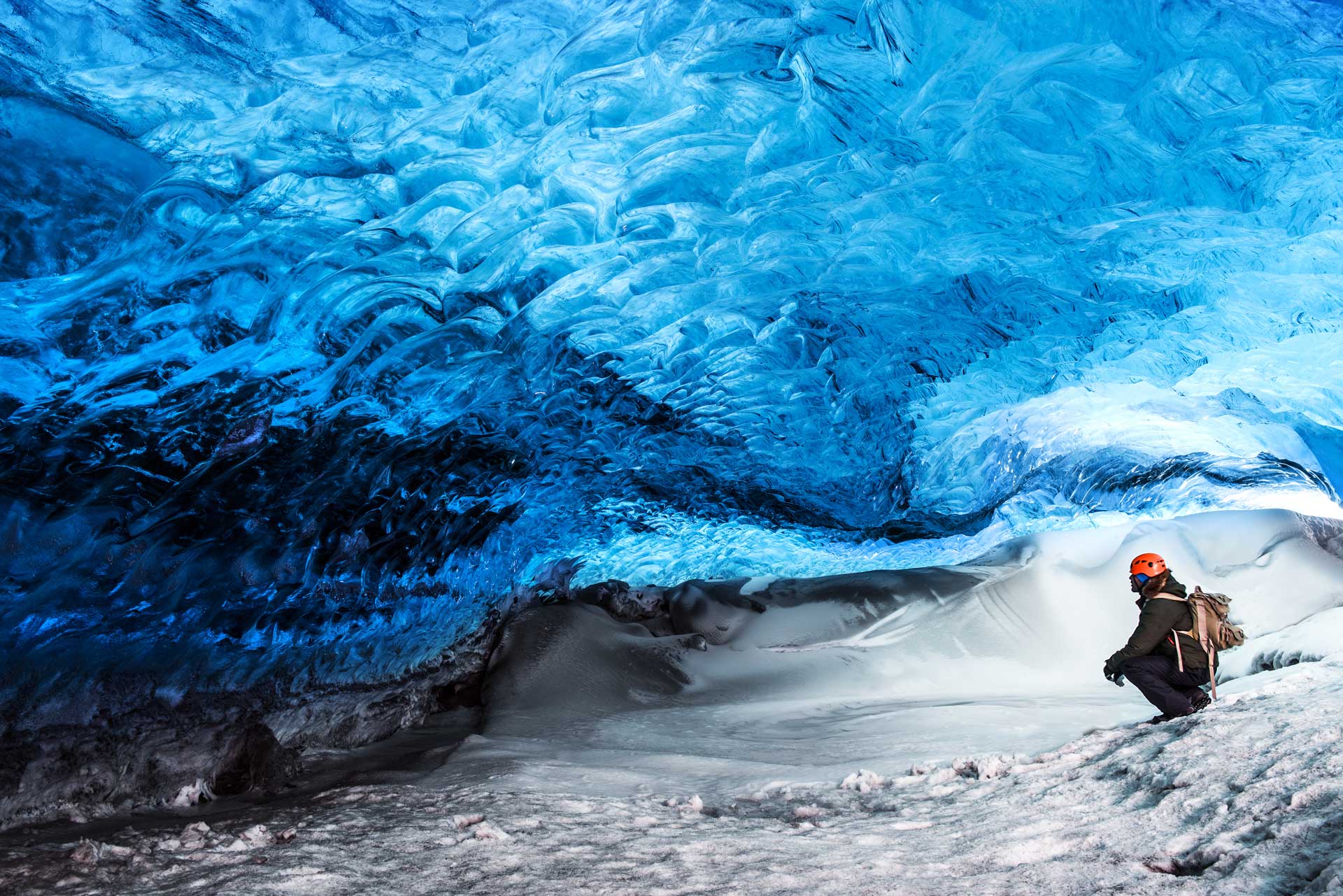
Can you visit ice caves in Iceland on your own?
We recommend only visiting ice caves with experienced guides on an organised tour. Ice caves are potentially dangerous environments that require specialised knowledge and safety equipment.
Glacier conditions change around the clock, and what looks safe can become risky within hours. Professional guides monitor weather conditions, assess cave stability every day, and know which formations are OK to enter.
At Nordic Visitor, we only partner with adventure companies that employ guides trained in glacial safety, rescue techniques, and first aid. They carry essential safety equipment and maintain communication with base operations throughout tours.
Visitors attempting to explore caves without expert guidance could fall into a crevasse or get lost on the glacier. Unless you’re an expert, it’s also hard to know which snow bridges and ice caves are unstable and could collapse. Even experienced mountaineers use guides for ice caving in Iceland.
Good to know: Be sure to check that your insurance covers glacier activities before your trip.
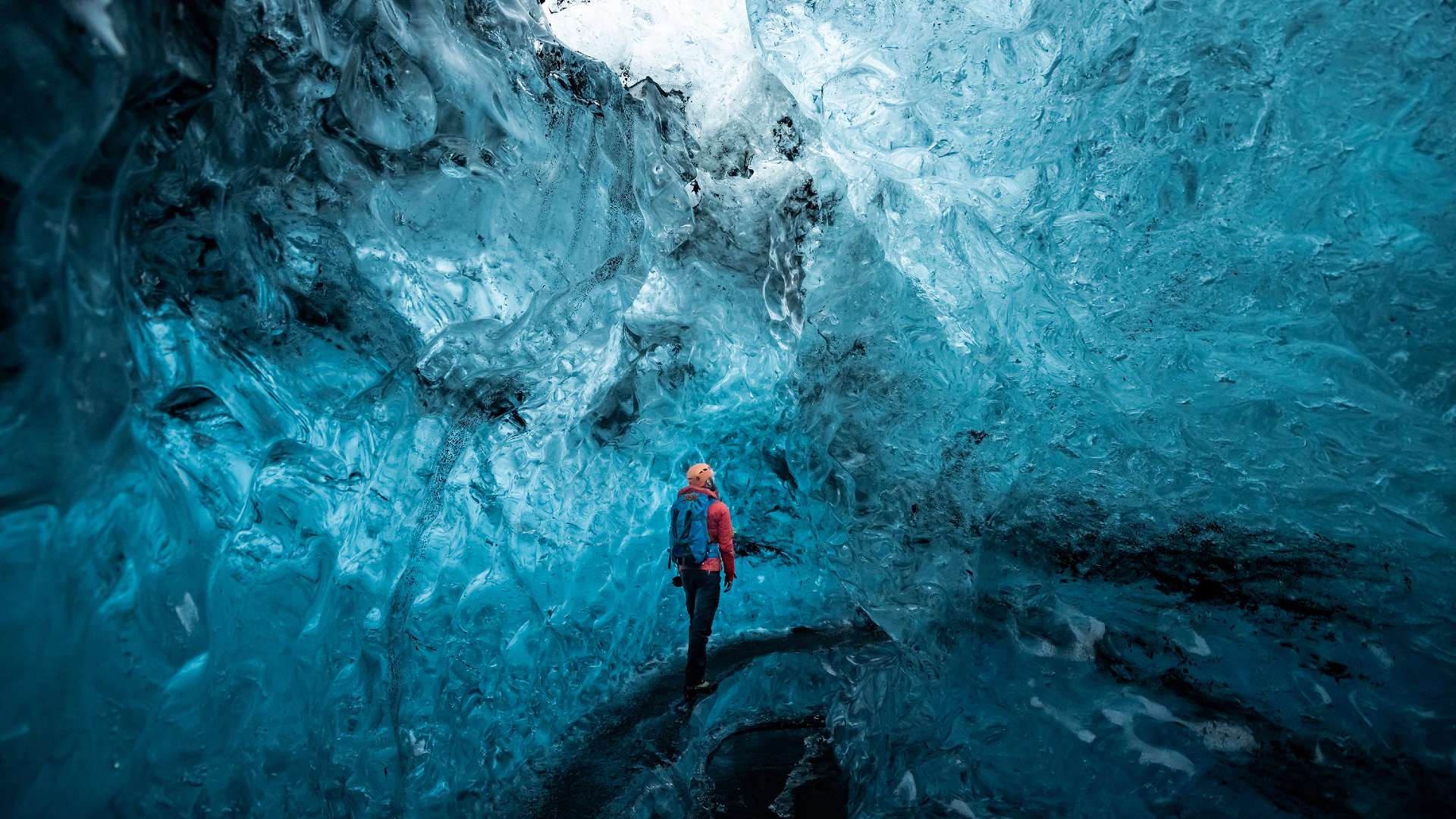
What do I wear on an ice cave tour in Iceland?
Before heading out, your guide will provide crampons, an ice axe, a helmet, and a harness. But you’ll need to come prepared with sturdy hiking boots, plus warm base layers and waterproof outer gear. Proper clothing makes the difference between an amazing day out and an uncomfortable one.
Here’s a more detailed idea of what to bring:
1. Base layers
Start with thermal underwear (merino wool or synthetic materials work best). Avoid cotton as it retains moisture and won’t keep you warm if it gets wet.
2. Insulated layers
Pack a fleece and an insulated jacket for warmth. This way, you can adjust layers throughout the day as your activity level and the temperature change.
3. Outer shell
A waterproof jacket and trousers are essential. Glacial environments can involve wet conditions, such as melting ice or snow and rain.
4. Footwear
Hiking boots with good ankle support. Your boots should be comfortable for walking on uneven, icy terrain.
5. Accessories
Warm hat, neck warmer, and waterproof gloves. Choose gloves with grippy palms rather than mittens – you'll need dexterity for holding ice axes and taking photos.
6. Additional gear
Pack a rucksack with enough room for spare layers, plus a water bottle, snacks, sunglasses, and sun cream. Light reflecting off the snow can cause glare even on cloudy days.
7. Hand warmers
These small heat packs can be a real treat during long, chilly adventures inside the ice caves.
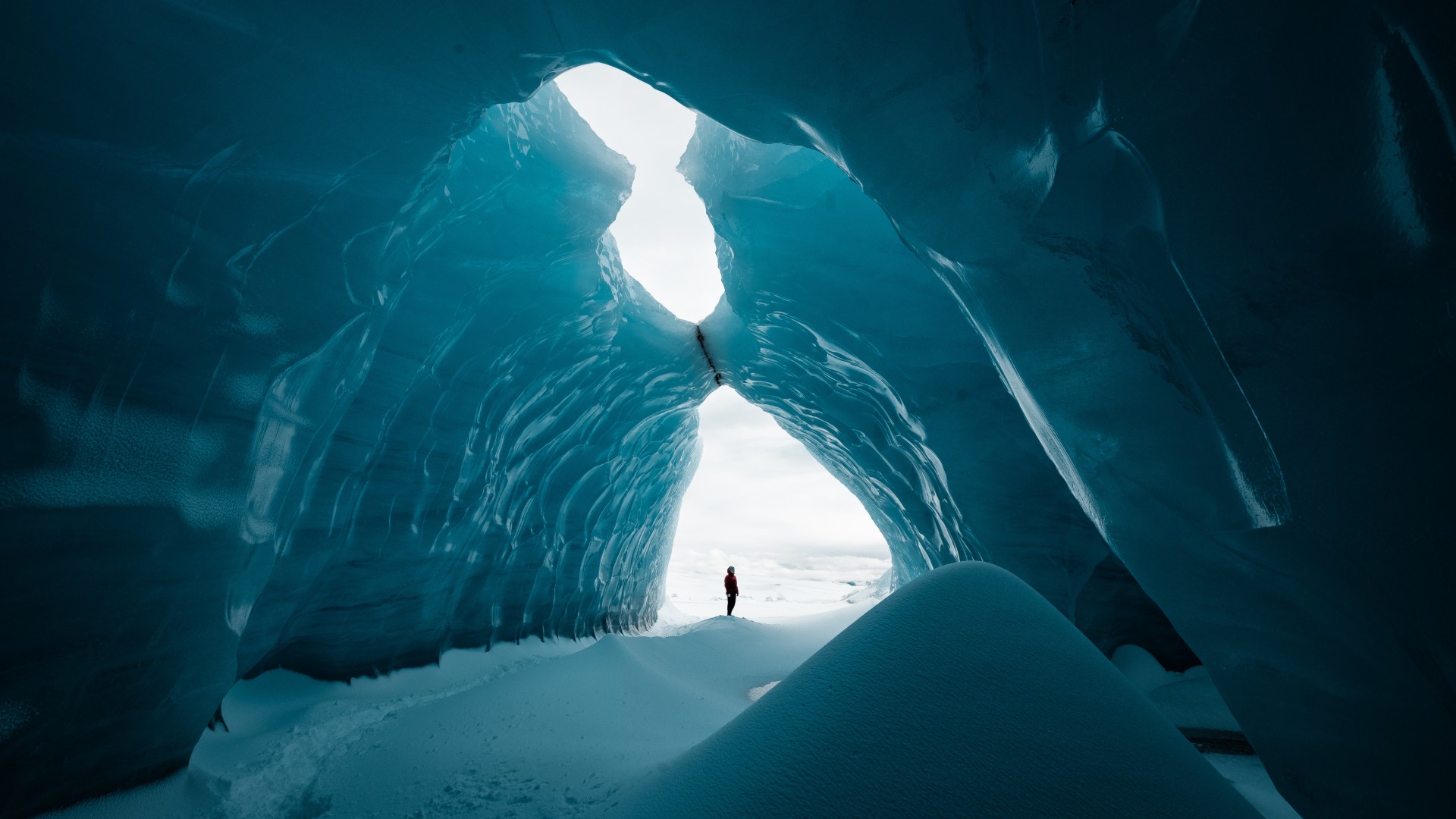
Discover Iceland's frozen wonders
Iceland's ice caves offer an unforgettable glimpse into the island’s glacial heart. These natural sculptures of blue ice create some of the most beautiful and otherworldly environments you’ll ever experience.
Whether you choose a Katla ice cave tour for volcanic drama or venture into the stunning ice formations of Vatnajökull, each cave visit reveals new wonders. The ethereal blue light, crystalline walls, and sense of being inside a living glacier create memories that last a lifetime.
Our tours include carefully selected ice cave excursions with trusted local operators. We’ll handle all the logistics while you focus on experiencing these magical frozen caverns.
We’ll help you plan the perfect itinerary that will show you why this island is truly special. Whether you choose a small group, a self-drive or a multi-day tour.
If your chosen tour doesn’t include ice caving as standard, you can always add it as an optional extra during the booking process.
Contact our travel experts who specialise in Iceland adventures. Your glacial getaway awaits – and trust us, it’s even more magical than you’re imagining.
